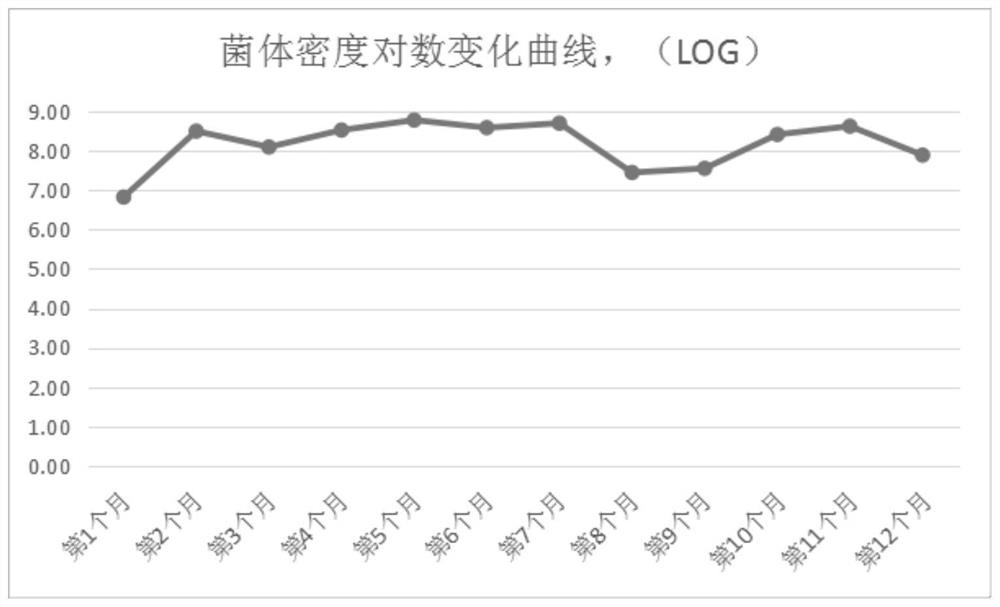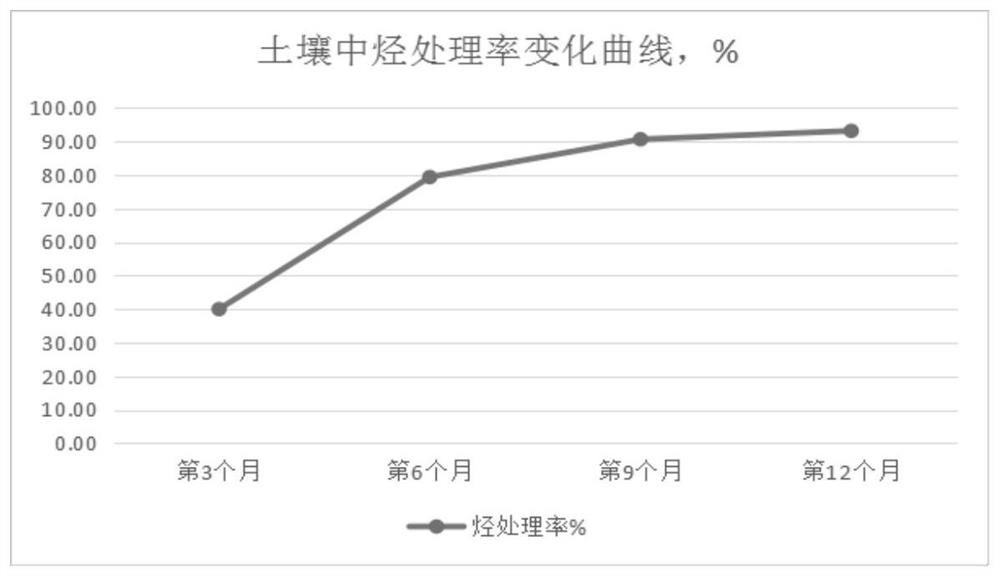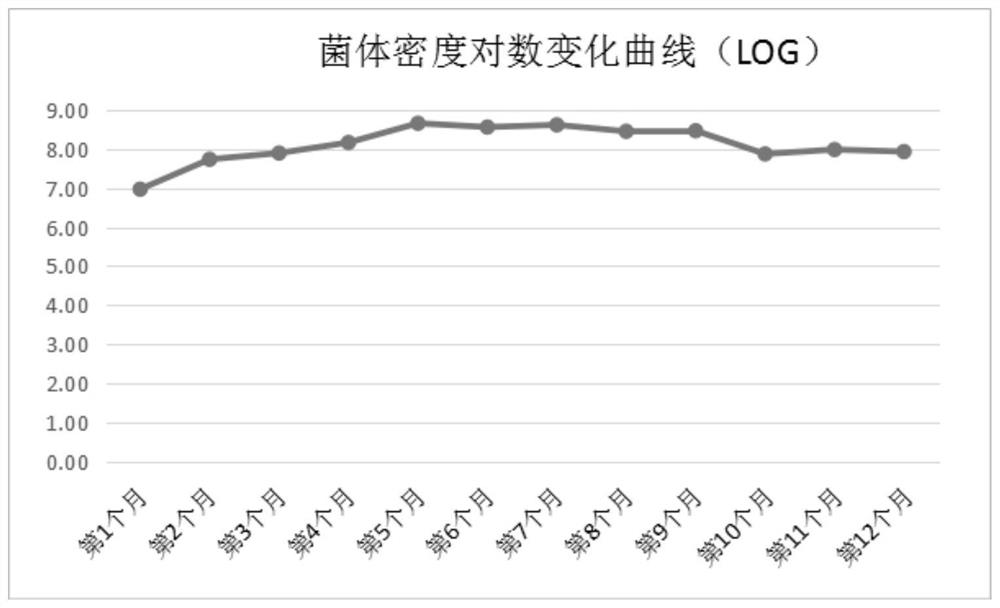Activating agent for in-situ remediation of microorganisms in deep contaminated soil and application thereof
A technology of polluted soil and in-situ remediation, which is applied in the field of petroleum hydrocarbon polluted soil treatment and application, can solve the problems of loss of nutrients and microbial cells, uneven soil texture and structure, and low effective microbial biomass, etc. Sweep range, effect of increasing wetting performance
- Summary
- Abstract
- Description
- Claims
- Application Information
AI Technical Summary
Problems solved by technology
Method used
Image
Examples
Embodiment 1
[0031] Take the underground polluted soil of a petroleum and petrochemical enterprise, the average hydrocarbon concentration is 1260mg / m 3 , in a laboratory, soil microbial remediation experiment using a glass column setup.
[0032] The application method of this activator specifically comprises the following steps:
[0033] Step 1: Configuration of activator products
[0034] Firstly, according to the proportioning concentration of the activator product, prepare the activator as follows: rhamnolipid biosurfactant dry powder 8.2%, hydroxymethylcellulose 0.4%, ammonium chloride 25%, ammonium sulfate 15%, yeast extract powder 17% , dipotassium hydrogen phosphate 26%, hydrocarbon degrading bacteria powder 8.4%, mix uniformly in a mixer, and set aside;
[0035] Step 2: Calculation of Injection Volume
[0036] In an indoor environment at 15-18°C, a columnar glass soil treatment device was used to conduct a degradation experiment of petroleum hydrocarbons in soil. The bottom of ...
Embodiment 2
[0050] In situ soil microbial remediation treatment of a petroleum and petrochemical company, the average concentration of petroleum hydrocarbon pollutants in the treated soil was 740mg / m 3 .
[0051] The application method of this activator specifically comprises the following steps:
[0052] Step 1: Configuration of activator products
[0053] Firstly, according to the proportioning concentration of the activator product, prepare the activator as follows: rhamnolipid biosurfactant dry powder 8.5%, hydroxymethylcellulose 0.1%, ammonium chloride 24%, ammonium sulfate 16%, yeast extract powder 17% , 25.8% of dipotassium hydrogen phosphate, and 8.6% of hydrocarbon-degrading bacteria powder are mixed uniformly in a mixer. The mixed activator product is sealed and stored in sealed bags, and the package is 10 kg / bag.
[0054] Step 2: Calculation of Injection Volume
[0055] According to the previous field investigation results, the average thickness of the polluted layer is 3.7...
PUM
| Property | Measurement | Unit |
|---|---|---|
| height | aaaaa | aaaaa |
| volume | aaaaa | aaaaa |
| volume | aaaaa | aaaaa |
Abstract
Description
Claims
Application Information
 Login to View More
Login to View More - R&D
- Intellectual Property
- Life Sciences
- Materials
- Tech Scout
- Unparalleled Data Quality
- Higher Quality Content
- 60% Fewer Hallucinations
Browse by: Latest US Patents, China's latest patents, Technical Efficacy Thesaurus, Application Domain, Technology Topic, Popular Technical Reports.
© 2025 PatSnap. All rights reserved.Legal|Privacy policy|Modern Slavery Act Transparency Statement|Sitemap|About US| Contact US: help@patsnap.com



